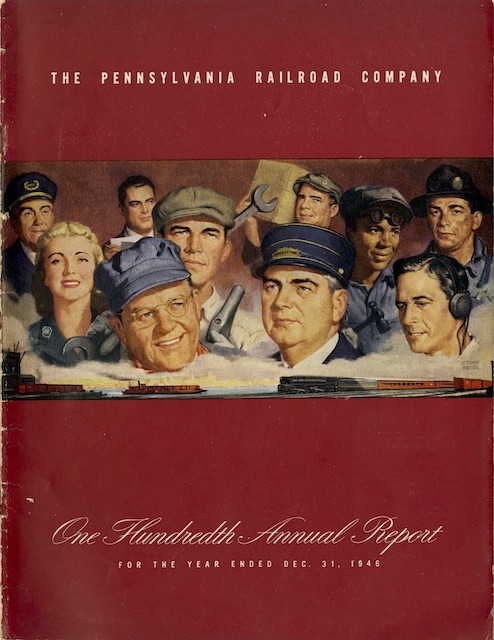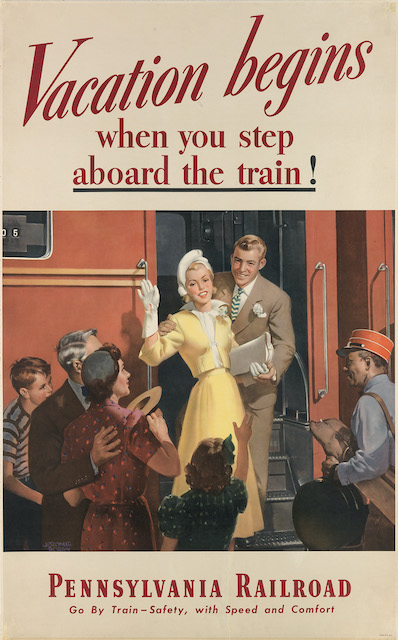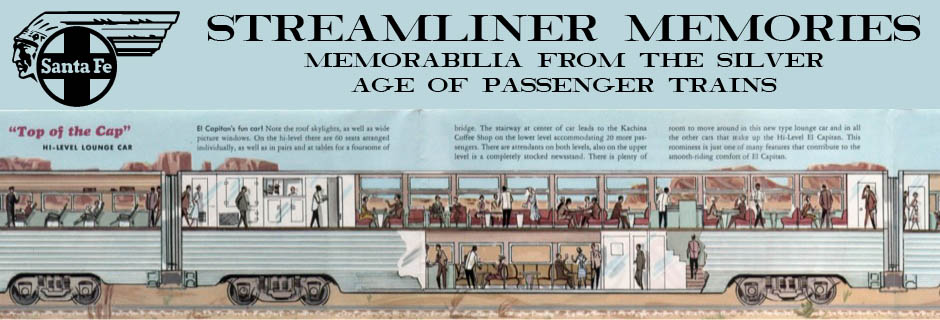The Pennsylvania Railroad did a booming business in 1946, carrying more traffic than any previous peacetime year in its history. But it still managed to lose money, which it blamed on government regulation. Apparently, regulators ordered wage increases retroactive to the first of the year but failed to authorize rate increases to cover those increased wages.
 Click image to download a 15.6-MB PDF of this annual report.
Click image to download a 15.6-MB PDF of this annual report.
Despite recording a bottom-line loss of $10.9 million, the railroad paid out $19.8 million in dividends to stockholders (multiply by 10 to get today’s money). This allowed it to maintain its record of uninterrupted dividends for this, its 100th annual report. PRR still holds the record of more consecutive years of dividend payments than any company in history.
The report’s cover has a painting showing a range of PRR employees. No doubt people today would criticize the painting for showing only one black, one woman, and eight white men, but in 1946 it was probably considered progressive that it didn’t simply show ten white men.
The painting is signed Jerome Rozen, which refers to Jerome George Rozen (1895-1987), an artist who painted many covers for pulp magazines as well as ads including at least one “sleep like a kitten” Chesapeake & Ohio painting, and a painting for a Pennsylvania Railroad ad titled, “Vacation Begins When You Step Aboard the Train.”
 Click image for a larger view.
Click image for a larger view.
Rozen was born in Chicago and, like so many other railroad artists, studied at the Art Institute of Chicago. He had a twin brother named George who also painted for pulp fiction magazines. Unlike George, who focused on pulp fiction, Jerome also did covers for more respectable magazines such as the Saturday Evening Post as well as ads for the railroads and Shell Oil.
